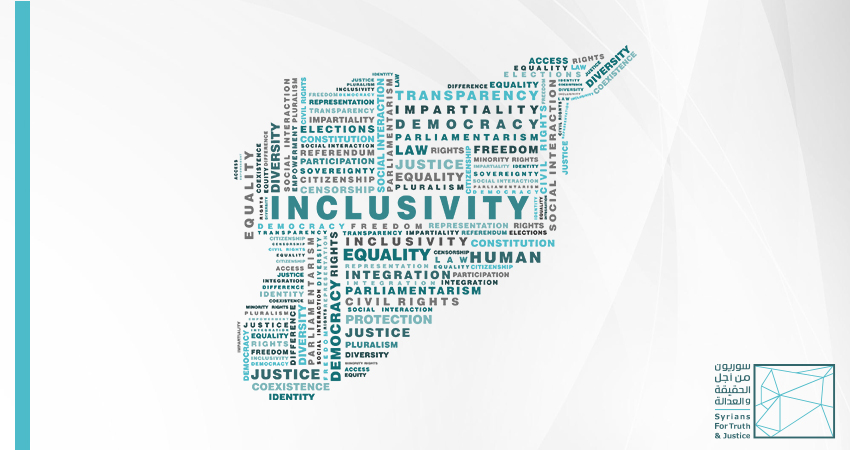-
Summary
This research paper seeks to explore the multiple layers and varying forms of exclusion in Syria at the political, constitutional, legal, and societal levels to unveil the undeniable repercussions it poses for marginalized individuals and communities and how, since the establishment of the Syrian State, it has pushed excluded groups outside the framework of representation, participation in public life, constitutional and legal protection, and disproportionately exposed them to violations and deprivation of rights.
To this end, this paper will provide specific examples of discrimination and their impacts, as well as a set of recommendations to stakeholders to ensure that the culture of exclusion rooted in Syria is not normalized, to break the cycles of exclusion, and try to build a modern State that respects diversity, can accommodate everyone, and transition to a better legal environment than that which existed before and after 2011.
In terms of structure, this paper is divided into four sections. In the first section, it exhibits multiple policies of discrimination warranted in the primary Syrian constitutions, which blatantly ignore diversity in Syria and the wealth it brings to the Syrian culture. Rather than endorsing diversity, the constitutions attempt to impose a “homogeneous identity” on Syrians and coerce them to coexist with discrimination in its various modes. This constitutional gap ran in parallel with the successive Syrian governments’ failure to officially recognize Syrian diversity and contribute to creating an inclusive identity that is capable of accommodating all Syrians.
In the second section, it briefly analyzes salient international and United Nations resolutions adopted while the Syrian uprising unfolded. For this purpose, the paper will shed light on these resolutions’ backdrops, which have facilitated the start of political negotiations between the opposing Syrian parties, introducing their political and military contexts that framed the design of the principal steps of the transition. Additionally, the paper will investigate the role of regional and international actors and how they have fostered exclusion and negative representational allotments at the expense of authentic inclusivity and participation without genuine regard for the aspirations of Syrians.
In the third section, the paper widens the scope of its investigation, probing further into the Syrian constitutional process, the legal circumstances that preceded it, and the international balances that influenced the selection of the members of the Syrian Constitutional Committee to demonstrate the impact the international intervention had on the formation of the committee, which ultimately denied several Syrian groups, most notably Kurds, the chance to channel their voices. The selection process, for instance, lacked transparency and was not a by-product of effective intra-Syrian talks. Instead, the selection process was one manifestation of the “balance/power division” between the three key States—Russia, Türkiye, and Iran—that intervened in Syria.
In its fourth and final section, this paper will enlist a set of conclusions, building on which it will also present several recommendations to decision-makers and stakeholders, with an attempt to focus on the role of the Syrian civil society, in its broader sense, in pressing towards an inclusive transition of a transformative dimension to help the country move forward towards a better future and put an end to the culture of exclusion.
In terms of methodology, the author of this paper used mainly textual analysis to approach the subject matter and at times relied on a historicist approach, especially upon revisiting key historical phases when the various Syrian constitutions were drafted, in an attempt to capture instances of exclusion and discrimination against certain Syrian communities, as well as to reveal the root causes of these practices.
You may read and download the full version of the research paper in PDF format by clicking here.

